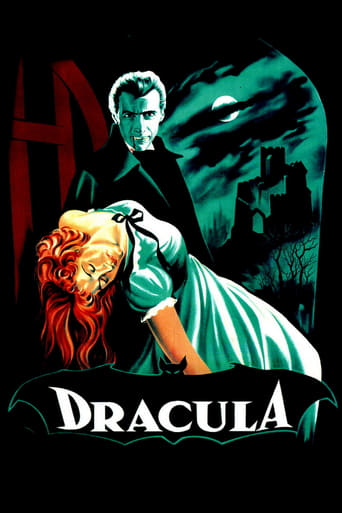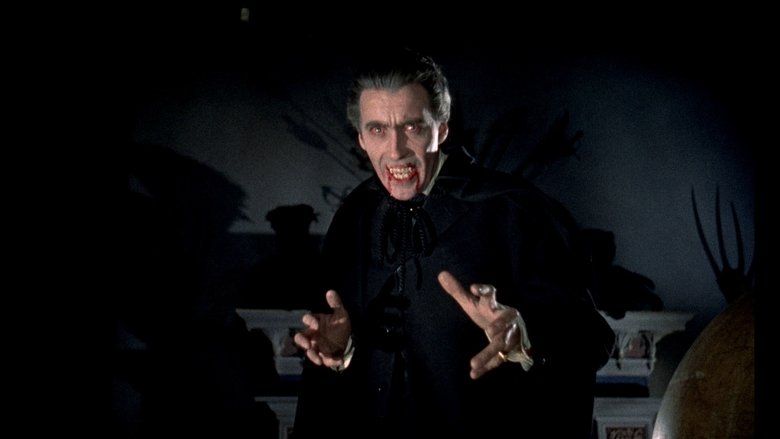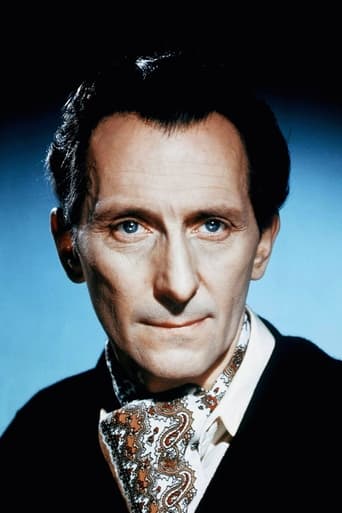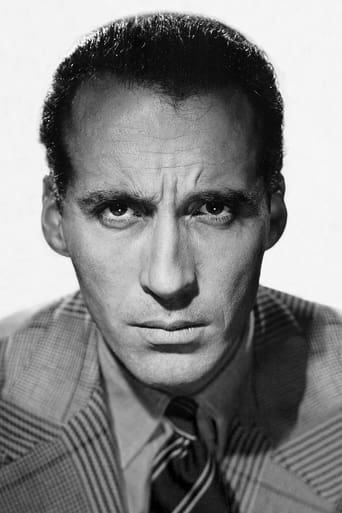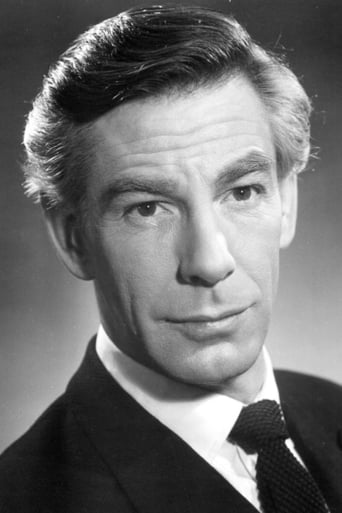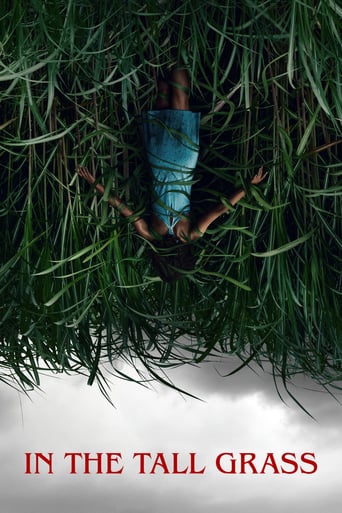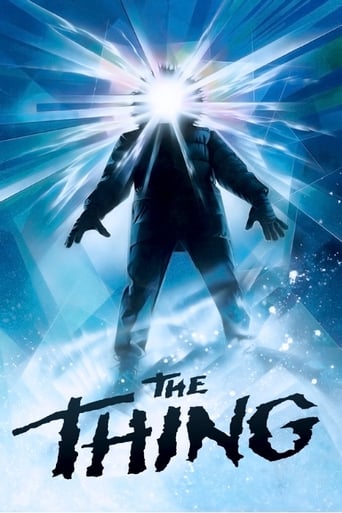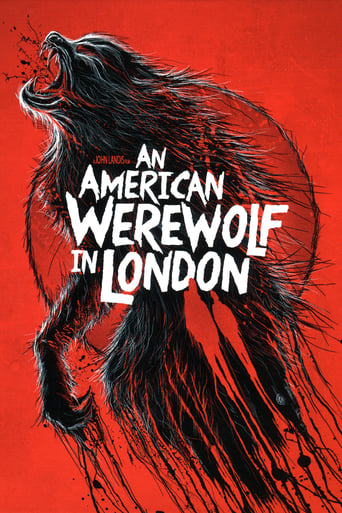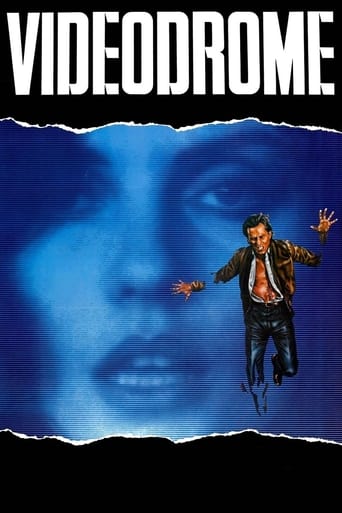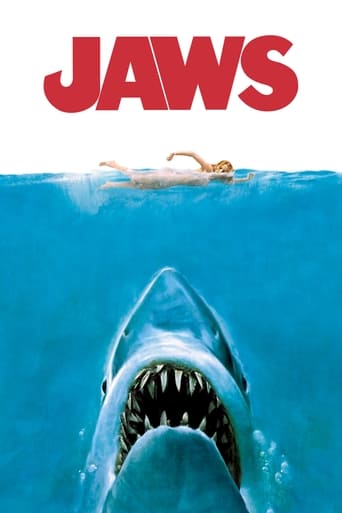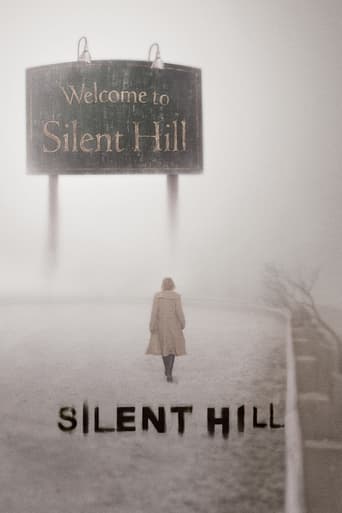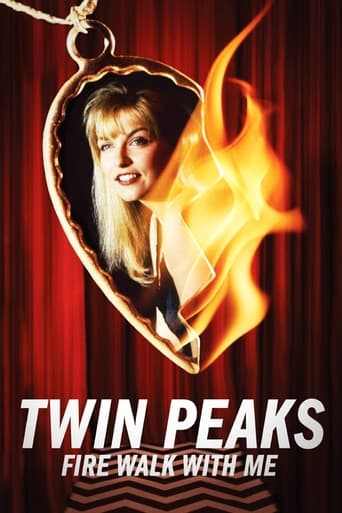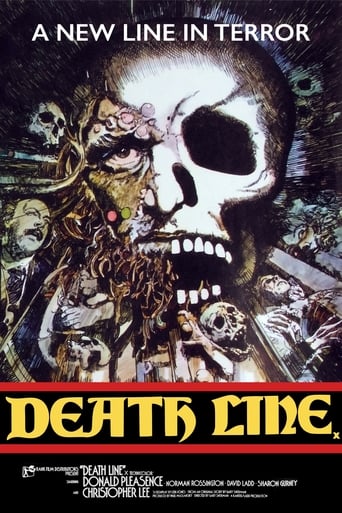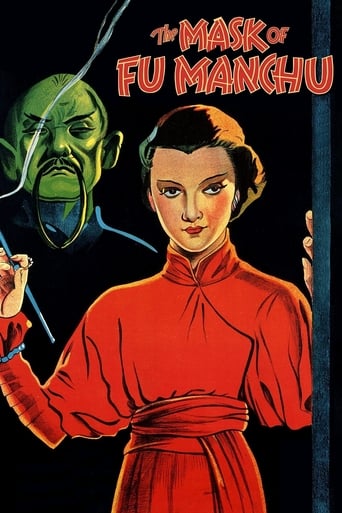Dracula (1958)
After Jonathan Harker attacks Dracula at his castle, the vampire travels to a nearby city, where he preys on the family of Harker's fiancée. The only one who may be able to protect them is Dr. van Helsing, Harker's friend and fellow-student of vampires, who is determined to destroy Dracula, whatever the cost.
Watch Trailer
Cast


Similar titles
Reviews
Considered quite brutal and excessively graphic in its day (1958) - "Horror of Dracula" (a Hammer Production) was really surprisingly tame by today's gore-infested standards of over-the-top, blood-saturated vampire movies.But - All the same - This particular horror film of glorified blood-lust is notable for being one of the very first vampire films to initiate the whole ultra-violent, blood-thirst trend that has continued (at full-throttle) to this very day.I think that it's interesting to note that this particular film-version of Bram Stoker's famed vampire story has Count Dracula's castle situated just outside the paranoid, little village of Klausenberg (not the expected, Transylvania).Anyway - Though this film did have its horrific moments - (Stake through the heart, anyone?) - It really wasn't anywhere near to being as sinister and savage as I was expecting it to be.
The first color-filmed Dracula (minus the tinting/toning of "Nosferatu" (1922) and a brief shot from the contemporary "The Return of Dracula" (1958)), we finally got to see the technicolor red blood in a cinematic treatment of Bram Stoker's novel—actually, this is the first instance of much if any blood at all in a Dracula movie. Another indication of the more-relaxed censorship by 1958, Hammer's "Dracula" is considerably more sexualized. Beyond introducing the familiar story to the splatter subgenre of its day, however, it's a relatively routine, if not bare-bones, adaptation story-wise, although, consequently, the plotting is punchier than most other Dracula movies.It wastes little time in jumping into the action, as Jonathan Harker is changed into a librarian imposter (yeah, I don't know why – an allusion to the film's source, perhaps) and undercover vampire hunter. The part of skeptic is played by the expanded role given to Arthur Holmwood, who's largely the Watson figure here to Van Helsing's Sherlock Holmes. Viewing this film, it's not surprising in the least that Peter Cushing, who plays Van Helsing, would play Holmes the very next year in "The Hound of the Baskervilles," nor is it surprising that he'd later play the Doctor, who also gets to show off his brilliance to stupid companions, in a couple "Doctor Who" movies. Meanwhile, Michael Gough, as Arthur, later turned to serve another batman in the 1989-1997 comic-book tetralogy. There was always an element of Holmes/Watson to "Dracula," demonstrating the connections between the horror and mystery genres, but finally having Englishmen play the parts surely stresses the similarities.Mina and Lucy, instead of switching roles this time, as they have in other adaptations, trade lovers, with Jonathan becoming Lucy's beloved and Mina marrying Arthur. Incestuously, Lucy also becomes the sister of Arthur, her former fiancé from the novel. As with most misogynist movie revisions of Stoker's tale, the two leading ladies are turned into lustful damsels-in-distress while the men play heroes. Additionally, Dr. Seward's role is reduced, and Renfield and the Texas suitor are eliminated (a Renfield type, however, appears in the third film of the series, "Dracula: Prince of Darkness" (1966)). The three female vampires from Castle Dracula are reduced to one, but this is compensated for by her displaying ample cleavage.Christopher Lee's Dracula is a relatively mute rendition; the titular role is reduced here to a supporting character to the crime- solving duo of Van Helsing and Arthur. But, with the aid of dramatic reveals involving thundering music, cutaways and close-up entrances, Lee does make an impact. His Dracula is basically just a monster, sporting fangs, blood-shot contacts and a blood-stained mouth, yet still mostly in the suave vampire tradition of Bela Lugosi. That's fine; it's appropriate for the action-packed pacing and splatter-type horror of this "Dracula." And having an ugly Count, as in the novel, would've distracted from the sexual acts of his book-connoisseur, country gent preying on the townsfolk's women. Oddly, there's also more crosses in this version, including a makeshift one (a gimmick reused ad nauseam in the sequels), which Van Helsing employs in the special-effects-laden climax, to trap the vampire between him and a "Nosferatu"-style sunbaked fate. A bit limp for a red-blooded Dracula.(Mirror Note: No mirror shots. The only mirror isn't used for a through-the-mirror shot; it's merely for Jonathan to examine his bite mark.)
One more movie about Count Dracula. This time it is not remake of some of its predecessors, nor the original story inspired by Dracula. This one is direct, although not literal, adaptation of cult classic by Bram Stoker. Authors gave their best to turn this cult novel into unexciting, even boring, movie. I'm confused by the choice of actresses. If they couldn't find three girls that will be convincing in their roles, they could at least find three with breathtaking looks. Those they took are neither. First one is ugly and other two, although much better looking, are very unconvincing. Even legendary Christopher Lee is totally lame in role of Dracula, especially compared to Bela Lugosi. This is probably the worst Dracula movie ever to date. I'm watching them chronologically, so I can not speak about those which came after just yet. The only good things about this movie are Peter Cushing and scene of Dracula's death, which is fascinating for its time.4,5/10
Some years ago it was written that "Lee and Cushing are the only Dracula and Helsing on the cinematic map, in the hall of fame, and I can't see them ever being bettered." That is the general and overwhelming consensus on this site, although there are still a few laughable retards in their habitual denial.Dracula and van Helsing, in this version, are unbelievably real. They are totally convincing. Van Helsing is the archetypal Victorian ethical gentleman, courteous, considerate, dauntlessly resolute, athletic and well-informed. Dracula is the pagan defeated demon from immemorial ages past, a fiendish but superbly imposing nobleman from a forgotten age.The acting support is adequate if not great, though memorably good are Woodbridge, the surly landlord; Malleson, the jolly undertaker; the corruptible customs official; Mina (or Lucy) and the little girl. The geography is distinctly vague. An excellent anachronistic touch is the bottle of Gordon's gin in the inn's uncertain locality, just the kind of familiar everyday British product you'd expect to find in Transylvania --- if that's where this is.I've seen some of the other versions, and they are all totally forgettable. This one is indelible. You could say it has permanent bite; and the plot holes are legion but quite irrelevant.

